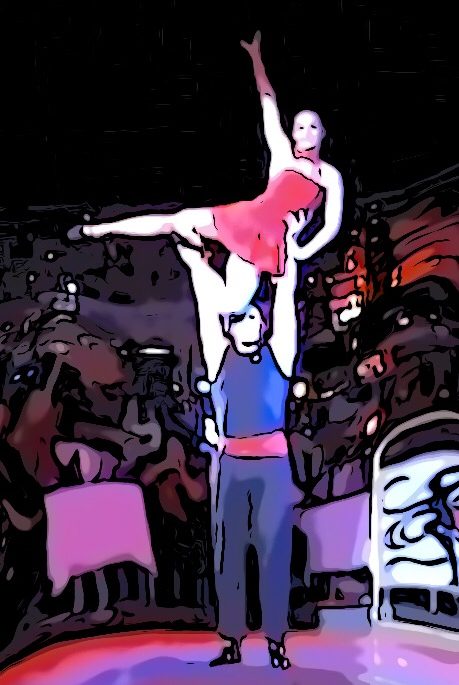What is so fascinating about a fish swarm? The single fish certainly not (except if you are hungry). I am more fascinated by the collective reaction of the swarm to its surroundings. The single fish adapts to the movements of the swarm in an incredibly short time. And the intelligence of these fish is certainly not very high. Every single fish reacts immediately to the movement of its neighbors without first thinking about it. This connects every fish in the swarm with all other fish. An inimitable balance!
In order to be successful in partner acrobatics, a connection to all participants is also necessary. For an outside standing, balancing looks extremely difficult and mostly the curiosity wins, whether something might go wrong. If the viewer then believes he has seen through the trick, of course, he tries to imitate him. Without the necessary knowledge, however, this can quickly go awry.
Below I have put together a risk assessment that reflects my experience as acrobatic trainer. The division corresponds to the view in the partner-acrobatics. In principle, we distinguish between the lower (base) and the upper partner (flyer).
So here’s ToM’s risk analysis of the meaningful variants of partner acrobatics:
This consideration is intended for those who have sought an alternative for other points of view (à la Como). The Mindmap (Acro-Level.pdf) is in PDF format → I recommend using the zoom options;). Clicking on the desired position opens the corresponding post…
Of course, I always look forward to a creative feedback ..
At this point, it might be helpful to first familiarize yourself with some definitions of terms.
Color code:
- Green – Beginner: For me, a beginner is someone who has heard something of acrobatics, but has no previous experience. Dancers or gymnasts do bring along a lot, but have rarely dealt with shear forces. The resulting shaky way of balancing can lead to overloading or injury.
- Yellow – Advanced: An advanced has already learned the basics of the lying position and begins to play with the center of gravity of the partner.
- Orange – Expert: An expert has already learned all of his positions and increases either the combination or the dynamics of the tricks.
- Red – Professional: An expert can do the tricks he shows on stage safely and without a safety assistance. He can deal with the possible mistakes of his partner.
This results in 6 levels of difficulty each for base and flyer!
Example:
If a base level expert (orange) trains with a flyer level of absolute beginners (light green), he should limit the tricks (also himself!) to the possibilities of the flyer.
Therefore the upper limit should be…
Base: Standing – on the hands – straight-arm (= the base stands and balances the flyer with straighten arms above his head!)
Flyer:
– belly flier: no problem 🙂
– back flyer, shoulderstand, etc; only with safety assistance
– Standing in the hands: pointless and only creates unnecessary stress on the flyer! 🙁
In principle, the base should be heavier and stronger than the flyer.
The heavier the flyer and the farther his center of gravity is from the base, the more the shearing forces affect the base … this looks very fast like a child with a rattle.
Below you will find the same mind map again. In this presentation, however, you can select a category and get a selection of matching posts…
Contributions of the category “Member“, but can only be viewed by registered visitors of my website → login.
Deutsch

